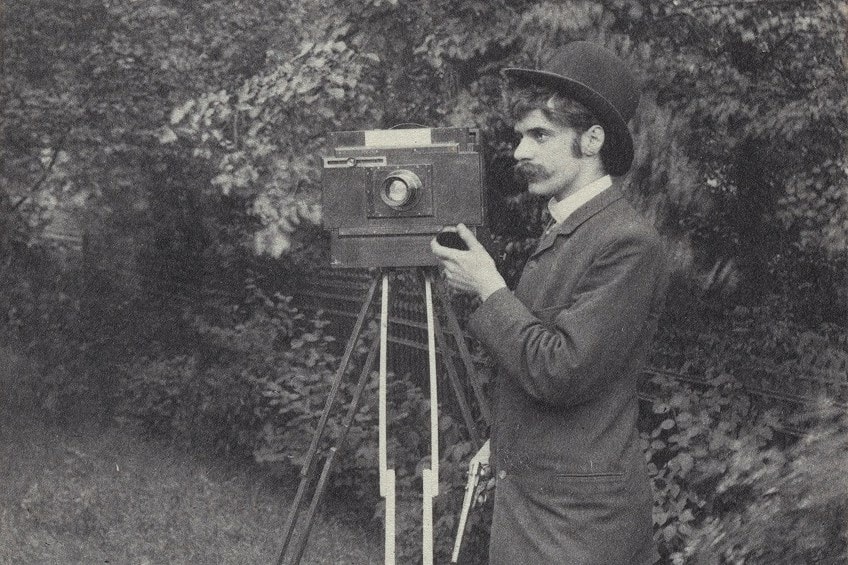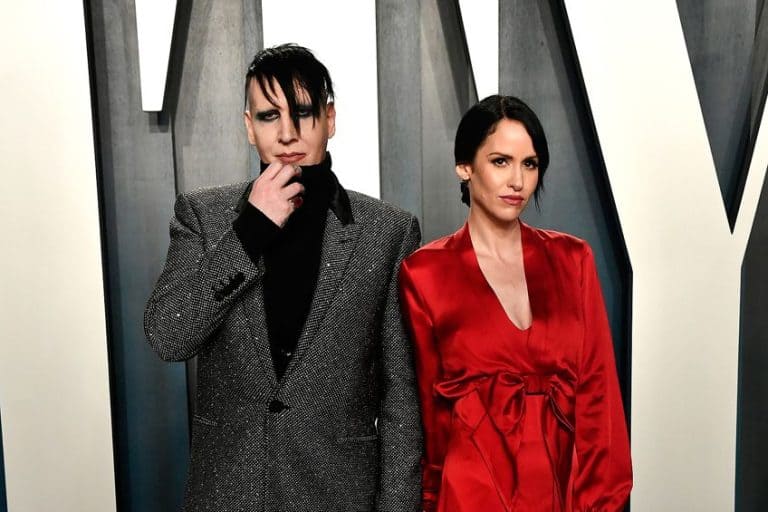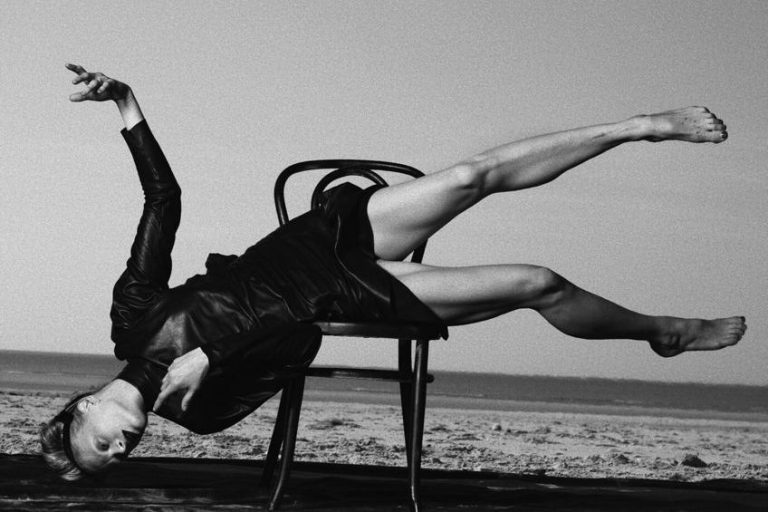Alfred Stieglitz – The Art and Works of Photographer Alfred Stieglitz
Who is Alfred Stieglitz? Alfred Stieglitz’s importance in the establishment of Contemporary art in America stems as much from his efforts as an exhibit promoter, art dealer, editor, and publisher as it does from his profession as a photographer. Alfred Stieglitz’s photography contributed to the emergence of contemporary and aesthetic still life photography in America in the early 20th century. Alfred Stieglitz’s artwork demonstrated tremendous technical command of texture and tone and delighted in developing atmospherics, proving that photography deserved a position among the fine arts.
Alfred Stieglitz’s Biography
| Nationality | American |
| Date of Birth | 1 January 1864 |
| Date of Death | 13 July 1946 |
| Place of Birth | Hoboken, New Jersey |
Later in life, inspired by Cubism and other styles, he grew fascinated with straight photography, preferring greater sharpness and fewer luscious effects. Alfred Stieglitz, who originally emerged in the atmosphere of Pictorial photography, wanted to acquire prominence for his medium by achieving end results similar to those seen in other great arts such as painting.
Many of his contemporaries used meticulous retouching to produce a sense of handmade craftsmanship, while Alfred Stieglitz depended more on compositional qualities and tone control, frequently focusing on natural elements like steam and snow to achieve characteristics comparable to those of the Impressionists.

Childhood
Alfred Stieglitz was born shortly before the American Civil War ended in Hoboken, New Jersey. He was born to German-Jewish immigrants and the Stieglitz family departed the East Coast and returned to Germany in 1881, hoping that the German education system would push young Alfred in ways that America’s had not.
The next year, while studying at Berlin’s Technische Hochschule, Stieglitz was introduced to photography for the very first time.
Early Training
Despite studying to potentially become a mechanical engineer, in 1882 Stieglitz bought his very first camera and began photographing panoramas of the rural countryside in Germany. In order to satisfy his newfound passion for photography, the self-taught artist trained, investigated, and thought about the medium.
Stieglitz continued to publish essays and photographs in the British journal Amateur Photographer for the remainder of that decade. This gained him a name within Europe’s finest photographic circles. Following the passing of his sister Flora in 1890, he returned to America to reunite with his family. While there, he led the Pictorialism movement, which espoused photography’s artistic legitimacy.

Mature Period
Stieglitz purchased the budding Photochrome Engraving Company after landing in New York City. Stieglitz, the self-proclaimed king of American photography, was looking for the ideal venue to exhibit it to the public. Stieglitz devoted his whole career to creating Camera Work magazine, which became the face of the Photo-Secessionist movement.
The Secessionists were more concerned with the photographer’s technical ability and creative potential than with the image itself.
He also founded the Little Galleries of the Photo-Secession at the encouragement of companion and fellow photographer Edward Steichen. It was the first exhibition of its sort to combine paintings and pictures on the same artistic plane.

Late Period
291, as the gallery became called, was an exhibiting place for the avant-garde creative movement. It displayed Alfred Stieglitz’s artwork as well as the work of other European and American modernists. Friends’ artwork would be displayed among works by Europe’s most renowned artists, including Paul Cézanne, Pablo Picasso, and Henri Matisse.
A display at the gallery introduced artists and their works to notable writers and speakers on Contemporary art.
Stieglitz focused on his Equivalent series between 1922 and 1935. Stieglitz photographed clouds with his camera pointed to the sky, anticipating that the abstracted pictures would express his artistic aim. The photos, cropped tight, are explorations in composition and shape.

Stieglitz and O’Keeffe
Georgia O’Keeffe’s artwork was first seen by Alfred Stieglitz in 1916. He hung her artwork in the halls of his gallery without her consent or knowledge. When she complained, he simply said, “You have no idea what you’ve done in these images.” This would mark the start of their relationship. The pair married in 1924, although their personal relationship started soon after they met.
Stieglitz utilized his status as a spouse, gallery owner, and supporter of modernism to establish O’Keeffe as the archetypal female painter of the day.
He started working on the well-known Georgia O’Keeffe – A Portrait series in 1917. In all, 45 of the 329 images show O’Keeffe naked. Stieglitz cropped her body in several of the pictures, leaving just a nude torso or eroticized body parts. This series marked O’Keeffe’s public debut. Her work, her husband’s images of her, and his assertion that she was the artist of women propelled her to fame. While O’Keeffe was abroad on one of her extended trips to the Southwest, Alfred Stieglitz died after a seizure in the summer of 1946.

Legacy
Alfred Stieglitz was the leader of the Pictorialist movement in the United States, which pushed for the aesthetic legitimacy of photography. Photographers such as Edward Weston and Ansel Adams would not have become household names if he had not influenced them. His personal works established the larger Pictorialist movement and served as a strong aesthetic model for his colleagues, many of whom were featured in Camera Work magazine.
Prior to his work, photos were regarded solely as historical documents.

With Gallery 291, Stieglitz single-handedly established the medium and exposed European and American modernism. At the gallery, Auguste Rodin, Pablo Picasso, Henri Matisse, and Paul Cézanne all made their American premieres. He established his wife, Georgia O’Keeffe’s career and hailed her – maybe unjustly – as the finest female artist of the twentieth century. He provided the groundwork for the present explosion of digital cameras.
While practically everyone nowadays is an amateur photographer, few were before the turn of the century, and Alfred Stieglitz was one of those few.
Accomplishments
Early examples of Alfred Stieglitz’s photography frequently juxtapose portrayals of delicate, fleeting natural processes with symbols derived from American industrialization. He was worried yet captivated by the development of American power, and he wanted to mitigate its seeming cruelty by hiding it in nature.
His later work represents the collapse of Pictorial photography and the advent of a new approach that asserted the worth of photography as a revealer of modern-day realities. It highlights a more mechanical era of modern life in America by using more geometric patterns, impacts of sharp focus, and great contrast.

Alfred Stieglitz’s Artworks
Alfred Stieglitz is often regarded as the most influential individual in American visual arts history. That is not to suggest he was the greatest creative America has ever generated. Instead, he had a bigger effect on American art than any other individual has had via his multiple roles — as a photographer, as an originator and advocate of photographers and creators in other media, and as an editor, supporter, and collector.
He believed that he preferred his photography to be direct, unmanipulated, and free of all gimmicks; a print that does not appear like anything other than a photograph, existing through its own intrinsic traits and displaying its own soul through aesthetic still life photography.
Winter, Fifth Avenue (1892)
| Date Completed | 1892 |
| Medium | Photogravure |
| Dimensions | 30 cm x 20 cm |
| Current Location | The Minneapolis Institute of Arts |
Alfred Stieglitz captured Winter, Fifth Avenue in black and white in 1893. The shot was taken in New York near the intersection of 35th Street and 5th Avenue. It was one of the first photographs Stieglitz made after returning from Europe with a more practical hand camera. This shot was the result of a three-hour wait in a snowstorm, according to Stieglitz: “In order to get photos by means of the hand camera, it is important to pick your subject, independent of figures, and carefully consider the lines and lighting.”
After deciding on them, Stieglitz explains that one must keep an eye on the passing numbers and wait for the moment when everything is in balance; that is when your eye is satisfied.

This frequently entails hours of patiently waiting. This photograph, Winter, Fifth Avenue, is the product of a three-hour stand during a heavy snowstorm on the 22nd of February, 1893, waiting for the right time. A carriage is seen traveling through a snowy metropolitan scene in the image. The impact of the snow blurring lends the image an impressionistic feel.
The author later incorrectly dated the photograph as having been shot on the 22nd of February 1892, although it could only have been taken the next year, in 1893, based on the weather reports for both days.
The Terminal (1893)
| Date Completed | 1893 |
| Medium | Photogravure |
| Dimensions | 30 cm x 20 cm |
| Current Location | The Museum of Modern Art, New York |
Alfred Stieglitz photographed The Terminal in black and white in 1893. The shot was taken in New York with a compact 4 × 5 camera, which was a more viable tool for documenting urban life than the 8 x 10 view camera, which could only be used with a tripod.
This is one of the photographs taken by Alfred Stieglitz utilizing this medium, as part of his effort to raise photography to the level of art.
The origins of this image were recounted by Alfred Stieglitz as follows: “From 1893 to 1895, I frequently toured the streets of New York’s downtown, along the East River, with my hand camera. One day, I discovered myself outside the old Post Office. It was bitterly cold. The earth was covered in snow. A driver in a rubber suit was hosing down his overheated automobile horses.”

In the dead of winter, a hot stream rises from the horses in this photograph. A smaller camera gave him more mobility, as well as the ability to catch fleeting moments in time. The steam gives the shot the appearance of a painting rather than a point-and-shoot photograph.
Atmospheric elements like these were crucial to Stieglitz because they provided a way to connect the image together while also demonstrating the type of technical ability and sumptuous effects that audiences appreciated in painting.
The Steerage (1907)
| Date Completed | 1907 |
| Medium | Photogravure |
| Dimensions | 30 cm x 20 cm |
| Current Location | The Museum of Modern Art, New York |
The Steerage portrays passengers boarding a packed boat bound for Bremen from New York. They sought to immigrate to the United States but were forced to return home. While numerous of Stieglitz’s early photographs reveal an interest in working-class motifs – or, at the very least, images of labor and industrial work – he approached these individuals with the patrician’s aloof compassion.
The image was significantly more essential to Stieglitz as an exercise in form and line.

He considered it his first “modernist” shot, the one that signified his departure from the rich tonality of his previous Pictorial period, and it has since become recognized as a milestone for the start of modernist photography. This was partly owing to Stieglitz’s personal advocacy of it. In 1911, he put it in a special edition of his magazine Camera Work dedicated to his new work.
The photographs were accompanied by a Cubist design by Picasso, and Stieglitz liked to tell how Picasso complimented this photograph for transforming its traditional topic into a dazzling, collage-like portrayal of several locales.
From the Back Window at 291 (1915)
| Date Completed | 1915 |
| Medium | Photogravure |
| Dimensions | 30 cm x 20 cm |
| Current Location | Museum of Modern Art |
Alfred Stieglitz photographed From the Back Window at 291 in black and white in 1915. The photograph was captured at night from a rear window of his New York gallery, 291. It’s one of the numerous photos he shot from that window that same year, including one during a snowstorm. The night photograph portrays a New York cityscape. Various sources of artificial lighting help to lighten the ruling darkness.
The backdrop building is 105 Madison Avenue, which is located on the southeast corner of Madison Avenue and 30th Street, whereas the smaller structure with the ads is 112 Madison Avenue.

Stieglitz appears to have been inspired by a recent show of Cubist artists Georges Braque and Pablo Picasso at the 291 Gallery, which would clarify his fascination with mathematical lines and forms, but also by ninetee19thth-century photographers such as David Octavius Hill.
“I have done quite a bit of photography recently,” he wrote to R. Child Bailey. It’s very honest. Portraits. Buildings from my rear window at 291, a whole sequence of them, with a few vistas and interiors thrown in for good measure. Everything is linked. I’m not aware of anything else but Hill’s writing that I consider to be so straight and intensely honest.”
The image also has a pictorialism feel to it, albeit being more in the straight photography manner.
Georgia O’Keeffe – Torso (1918)
| Date Completed | 1918 |
| Medium | Photogravure |
| Dimensions | 30 cm x 20 cm |
| Current Location | The Museum of Modern Art, New York |
Stieglitz clipped O’Keeffe’s body, filling the frame with just her naked torso. It’s part of a broader series of photographs of O’Keeffe, and it’s an intimate look at the lady who was Stieglitz’s muse for the last few years of his life. He treated O’Keeffe as if she were a landscape; the observer is urged to notice flowing organic lines rather than nakedness – a beautifully calculated composition. As a result, she is depersonalized and reduced to her constituent physical parts – she is breasts, hair, and arms.
Stieglitz’s dream inspiration had arrived in the form of Georgia O’Keeffe.

Between 1918 and 1925, when he was at his most prolific, he photographed O’Keeffe compulsively. During this time, he created about 350 mounted pictures of O’Keeffe that depicted a wide variety of her personality, emotions, and beauty. He photographed several close-ups of her body, particularly her hands, either alone or in close proximity to her hair or face.
Roxanna Robinson, an O’Keeffe biographer, claims that her “personality was vital to these images; it was this, as much as her physique, that Stieglitz was capturing.”
Equivalent (1925 – 1934)
| Date Completed | 1925-1934 |
| Medium | Gelatin Silver Print |
| Dimensions | 34 cm x 27 cm |
| Current Location | San Francisco Museum of Modern Art |
Alfred Stieglitz’s Equivalent is a collection of cloud images he took between 1925 and 1934. They are widely regarded as the first images meant to liberate the subject from literal interpretation, and as such, they are among the earliest truly abstract photographic pieces of art. He took over 200 photographs titled Equivalent, all of which depict clouds in the sky.
The vast majority of them depict simply the sky, with no horizon, buildings, or other things in the frame, although a few incorporate trees or hills. In one set from 1927, poplar trees are strongly shown in the foreground. Almost all of the images are reproduced in extremely dark tones, thus the sky is frequently black or practically black.
In all but a handful of the prints, the juxtaposition between the sky and the relatively lighter clouds is dramatic.

Some photographs feature the sun as a separate element or as a shining source behind the clouds. Equivalents, a multi-series by Alfred Stieglitz, integrated two crucial parts of his photography: the mechanical and the aesthetic. He was a virtuoso at both, but with Equivalents, he was able to take his abilities to a new level.
Since the summer of 1887, when he chose to capture his first shots of clouds above Lake Como in Italy, Stieglitz had been fascinated by the peculiar problems of capturing clouds. Until the 1920s, most photographic emulsions were orthochromatic, meaning they were light-sensitive mostly at the blue end of the spectrum.
This made photographing clouds, especially challenging since, without the use of special filters, the sky seemed incredibly bright and the clouds were lost against it.

Recommended Reading
In this article, we have discovered Alfred Stieglitz’s biography and artwork. There is, however, so much more to learn about Alfred Stieglitz’s photography and life. Here are a couple of book recommendations in case you would like to do so.
Georgia O’Keeffe, a portrait (1978) by Alfred Stieglitz
Alfred Stieglitz and Georgia O’Keeffe first encountered each other in 1916, when she learned that he had been providing her works their first public exhibition – without her permission. The next year, Stieglitz began work on his picture of his future bride, based on his concept of a portrait as a collection of photographs depicting the many qualities of a person. This book, which has been expanded from the initial version, which was published with O’Keeffe’s aid in 1978, comprises a sample selection of 79 of the hundreds of images shot during a 30-year span.
- Expanded from the original 1978 edition
- Includes a selection of 79 of the 100s of Stieglitz's photographs
- Represents photographs that were taken over a 30-year period
Camera Work: The Complete Image Collection (2019) by Alfred Stieglitz
Many of the best instances of early 20th-century photography and modernist art were widely distributed in the 50 issues of Camera Work, edited and produced by Alfred Stieglitz from 1903 to 1917. The richly illustrated magazine promoted photography as a high art form and introduced a new perspective to the American art world. This volume chronologically reproduces all of the images and other illustrations (excluding advertising) that have ever appeared in the journal.
- Edited and published by Alfred Stieglitz from 1903 to 1917
- A lavishly illustrated periodical with works by the best photographers
- Reproduction of all photographs and illustrations from Camera Work
Alfred Stieglitz was an American photographer and contemporary art advocate who was crucial in establishing photography as an acknowledged art form over the course of his 50-year career. Stieglitz was most recognized for his aesthetic still-life photography, but he was also famed for the New York art galleries he founded in the early 20th century when he presented many avant-garde European creatives to the United States. He was wedded to Georgia O’Keeffe, a famous painter.
Frequently Asked Questions
Who Is Alfred Stieglitz?
Alfred Stieglitz’s contribution to the development of modern art in America originates as much from his work as an exhibit promoter, art dealer, editor, and publisher as it does from his work as a photographer. Alfred Stieglitz’s photography aided the establishment of modern photography in North America in the early 20th century. Alfred Stieglitz’s work exemplified extraordinary technical mastery of texture and tone, as well as joy in establishing atmospherics, demonstrating that photography deserved to be considered fine art.
What Was Special About Alfred Stieglitz’s Photography?
Alfred Stieglitz is often considered the most significant figure in the history of American visual arts. With his numerous activities as a photographer, editor, sponsor, and collector, he had a larger influence on American art than anybody else. He claimed that he favored straight, unmanipulated, and gimmick-free photography; a print that does not appear to be anything other than an image, living via its own fundamental features and revealing its own spirit.
Jordan Anthony is a film photographer, curator, and arts writer based in Cape Town, South Africa. Anthony schooled in Durban and graduated from the University of the Witwatersrand, Johannesburg, with a Bachelor of Art in Fine Arts. During her studies, she explored additional electives in archaeology and psychology, while focusing on themes such as healing, identity, dreams, and intuitive creation in her Contemporary art practice. She has since worked and collaborated with various professionals in the local art industry, including the KZNSA Gallery in Durban (with Strauss & Co.), Turbine Art Fair (via overheard in the gallery), and the Wits Art Museum.
Anthony’s interests include subjects and themes related to philosophy, memory, and esotericism. Her personal photography archive traces her exploration of film through abstract manipulations of color, portraiture, candid photography, and urban landscapes. Her favorite art movements include Surrealism and Fluxus, as well as art produced by ancient civilizations. Anthony’s earliest encounters with art began in childhood with a book on Salvador Dalí and imagery from old recipe books, medical books, and religious literature. She also enjoys the allure of found objects, brown noise, and constellations.
Learn more about Jordan Anthony and the Art in Context Team.
Cite this Article
Jordan, Anthony, “Alfred Stieglitz – The Art and Works of Photographer Alfred Stieglitz.” Art in Context. May 13, 2022. URL: https://artincontext.org/alfred-stieglitz/
Anthony, J. (2022, 13 May). Alfred Stieglitz – The Art and Works of Photographer Alfred Stieglitz. Art in Context. https://artincontext.org/alfred-stieglitz/
Anthony, Jordan. “Alfred Stieglitz – The Art and Works of Photographer Alfred Stieglitz.” Art in Context, May 13, 2022. https://artincontext.org/alfred-stieglitz/.











